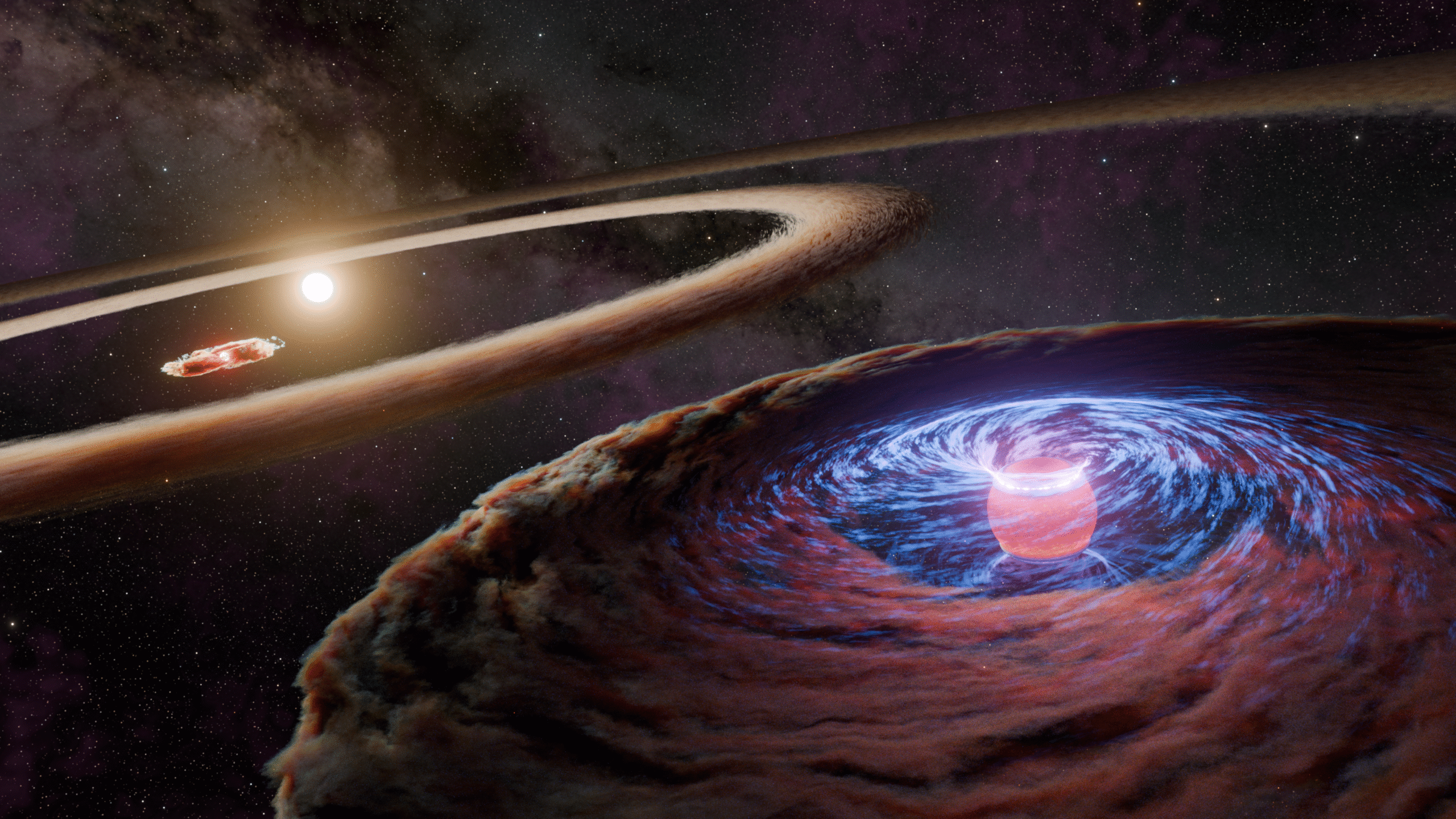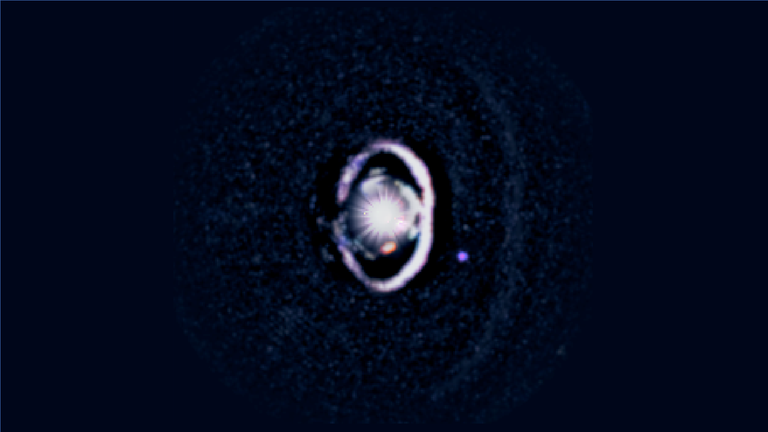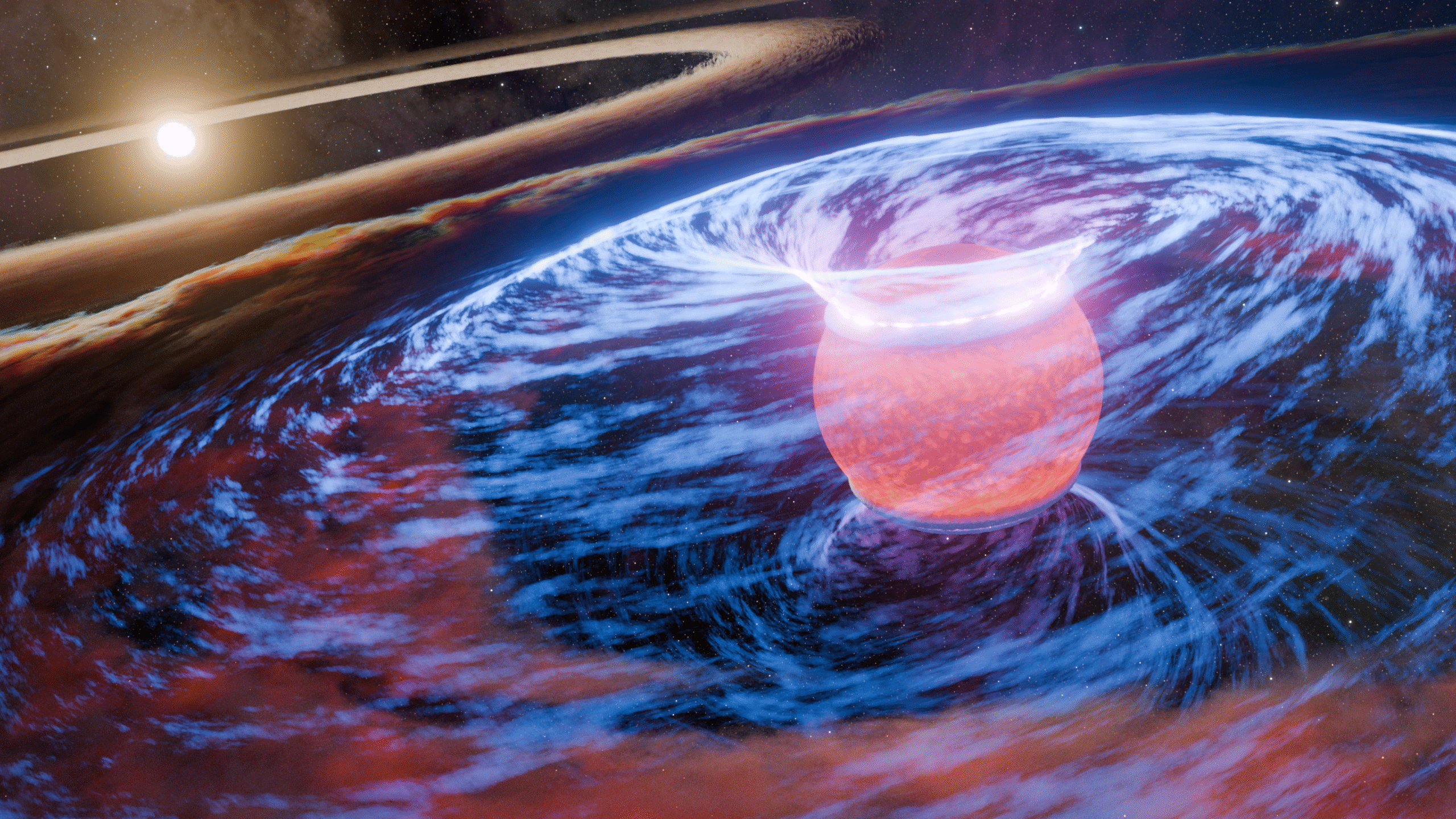WISPIT 2b Protoplanet: Astronomers Capture Rare Birth of a Giant

Discovery of WISPIT 2b Protoplanet
Astronomers have made a groundbreaking discovery: a young protoplanet named WISPIT 2b has been found inside a ring-shaped gap of dust and gas surrounding a young star. Scientists have long believed that planets form in such gaps, but this is the first time one has been directly observed.
WISPIT 2b is not just any planet—it’s a massive gas giant, about five times heavier than Jupiter. At roughly five million years old, it’s still in its early stages of formation, accumulating material from the surrounding disk. Located 437 light-years from Earth, WISPIT 2b provides a rare look into how planets grow.

A Window into Planet Formation
Protoplanetary disks—rings of gas and dust that encircle young stars—are the birthplaces of planets. Within these disks, planets carve out gaps as they gather material. For decades, scientists suspected that young planets were responsible for these gaps, but they lacked direct proof.
That changed with this observation. Using advanced imaging tools, researchers captured clear evidence of WISPIT 2b right inside one of the disk’s dark gaps. Unlike planets that migrate inward or outward after formation, WISPIT 2b appears to have formed exactly where it was found.
How the Discovery Was Made
The system around the star WISPIT 2 was first studied using the Very Large Telescope’s SPHERE instrument in Chile. These early observations revealed the disk’s distinct rings and gaps. Later, astronomers used the MagAO-X adaptive optics system at the Magellan Clay Telescope, also in Chile, to detect the planet directly.
MagAO-X specializes in high-contrast imaging, allowing scientists to essentially “photograph” the protoplanet. The team studied WISPIT 2b using Hydrogen-alpha (H-alpha) light, which glows when gas falls onto a young planet. The bright dot seen in this wavelength confirmed the presence of the growing world.
Researchers also analyzed infrared data using the Large Binocular Telescope in Arizona to better understand the planet’s temperature and composition.

What Makes It Unique
In addition to WISPIT 2b, scientists spotted a second bright dot closer to the star. This object might be another forming planet and will be studied further in future observations.
The research was led by Laird Close from the University of Arizona and Richelle van Capelleveen from Leiden Observatory. Their findings, published in The Astrophysical Journal Letters on August 26, 2025, mark a milestone in exoplanet science.
This discovery was supported by NASA’s Exoplanet Research Program and the National Science Foundation, highlighting the value of collaboration between space agencies and universities.


Truly a proud moment for science and human curiosity.
Interesting one
Scratch cards always felt like instant creativity – a little mystery revealing something fun! It’s cool how Space Logo AI lets anyone instantly visualize ideas – no design skills needed, just like that winning feeling! ✨
Yo, xocdia88henra! Heard some buzz about it. Gave it a spin, and it’s actually pretty fun once you get the hang of it. If you’re into that xoc dia vibe, this is probably up your alley. Give it a shot: xocdia88henra
Downloading mmliveapk now. Hope it’s as entertaining as everyone says. Fingers crossed for some good streams! Found them here: mmliveapk
Yo, gave gu88 a spin. Pretty cool setup, actually. Might be worth checking out if you’re bored. Here’s the deets: gu88
Hey everyone, I’ve been trying ok9aacom, and I’m really impressed with their customer support, super responsive. The variety of games kept me entertained for hours! Worth checking out: ok9aacom
If you’re a Rummy fan, Rammy91 is worth checking out. Decent graphics, smooth gameplay, and a good community. Give it a whirl and see what you think: rammy91